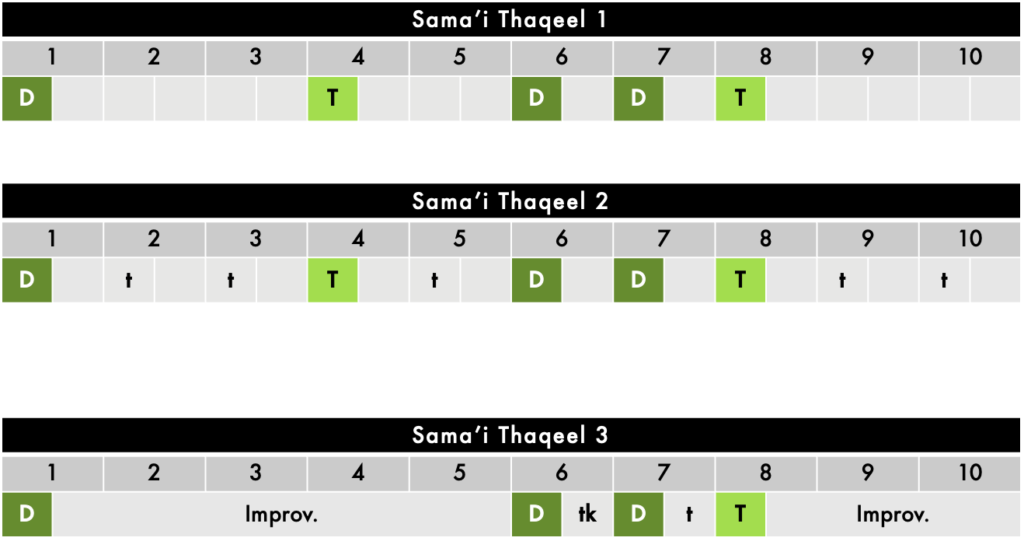
Newsletter Subscribe
Enter your email address below and subscribe to our newsletter

Enter your email address below and subscribe to our newsletter
Key Facts:
Malfuf in Arabic means wrapped, because more than one Malfuf is needed to make the rhythm
When played quickly, the Malfuf 1 sounds great without much ornamentation
If you are playing Malfuf and feel it is too slow, switch into a fast rhythm like Maqsum
Malfuf is a 2/4 rhythm
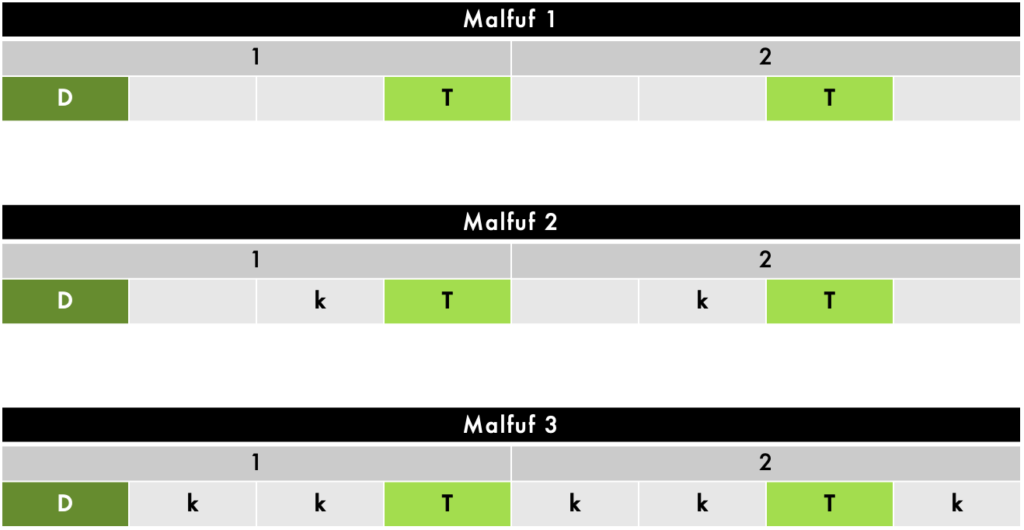
Key Facts:
Also known as the Sa’audi
Khaliji comes from the Arabian Gulf
Playing too much Khaliji can make a rhythm too bassy, keep it in check by alternating with Malfuf
Khaliji is a 2/4 rhythm
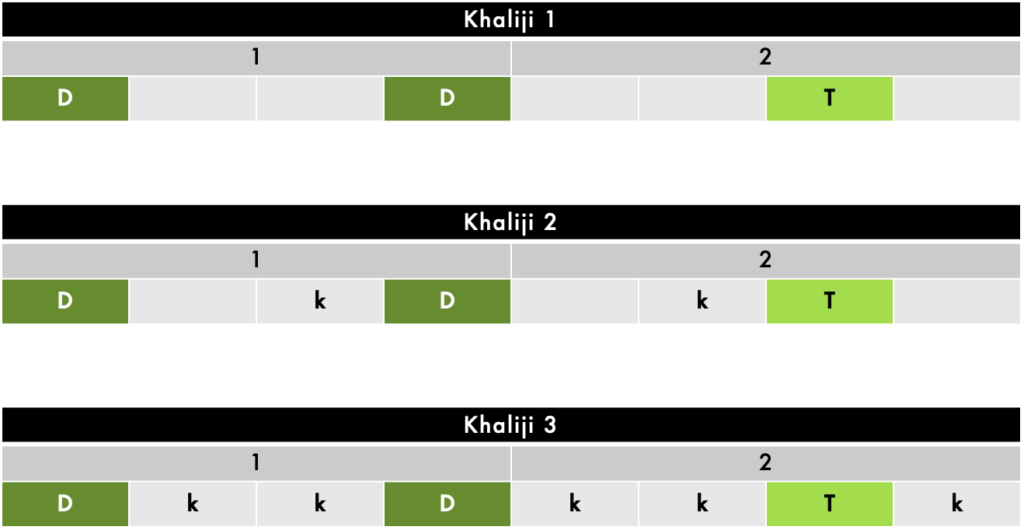
Key Facts:
Sometimes known as the “Indian Malfuf”
Whether this is an Indian or Iraqi rhythm, no one is too sure
Iraqi 3 with it’s double Doums sounds great on a Bass Doholla
Iraqi is a 2/4 rhythm
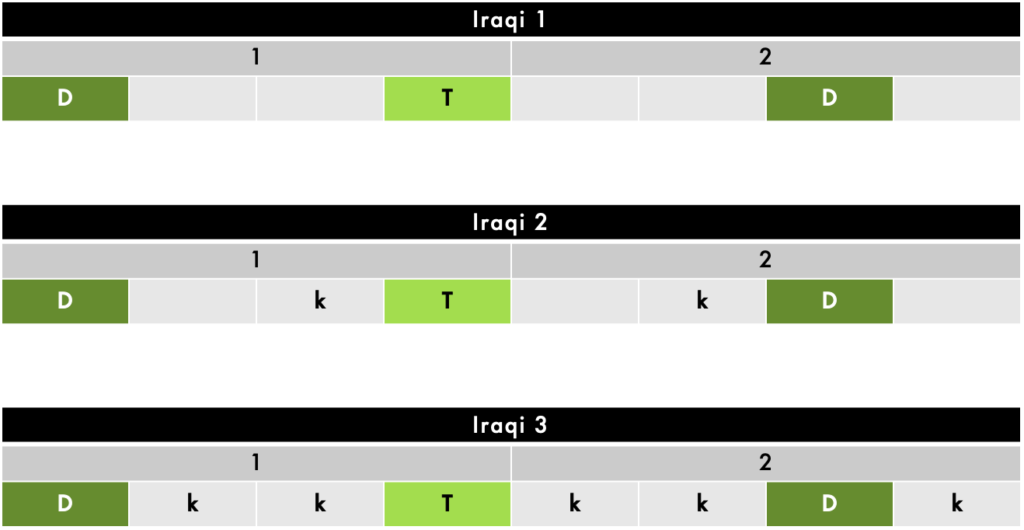
Key Facts:
Also known as the Zaar
The Ayub rhythm is associated to the whirling dervishes of the Ayubid Dynasty; it’s thumping bass provides a trance-like effect for dervishes to whirl to
Ayub is a 2/4 rhythm
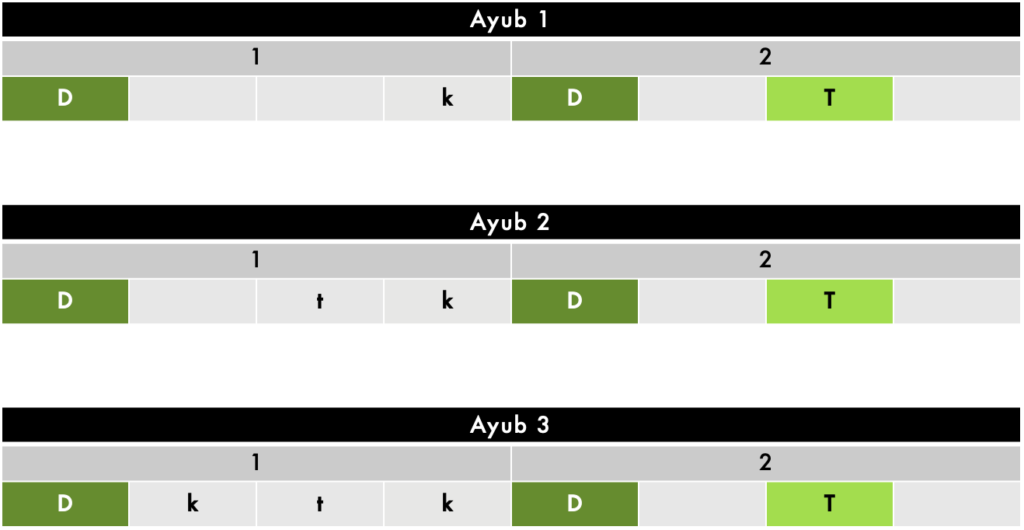
Key Facts:
An inversed version of the Ayub
Commonly agreed that Karachi does not refer to the city in Pakistan, and it’s true origins are unknown
Can be played conjunctively with other rhythms such as the Malfuf or the Cifte Telli
Modulates well with Malfuf, and with Maqsum if 2 Karachi measures are used
Does not have urgency of Malfuf or Ayub, and feels lazier. Can be played more slowly.
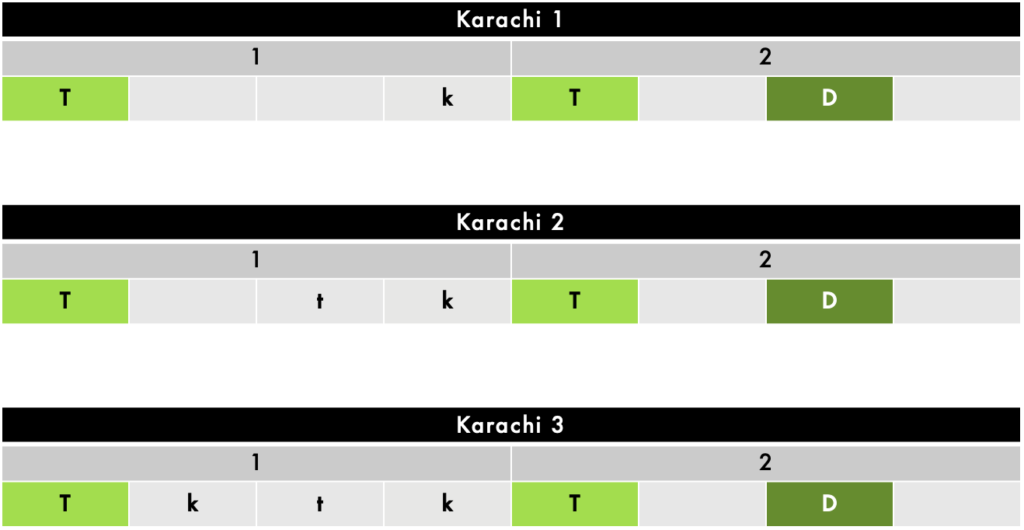
Key Facts:
Egyptian
Used for Hip lifts and shimmy walks in Raqs Sharqi
Can be seen as an ornamented version of the Ayub rhythm
Follows Maqsum at twice speed
Falahi comes from “Falaheen”, which means farmers. The Falahi is hence known as the farmers rhythm
The Falahi shouldn’t be played for too long, else it may “clutter” the music
Falahi is a 2/4 rhythm
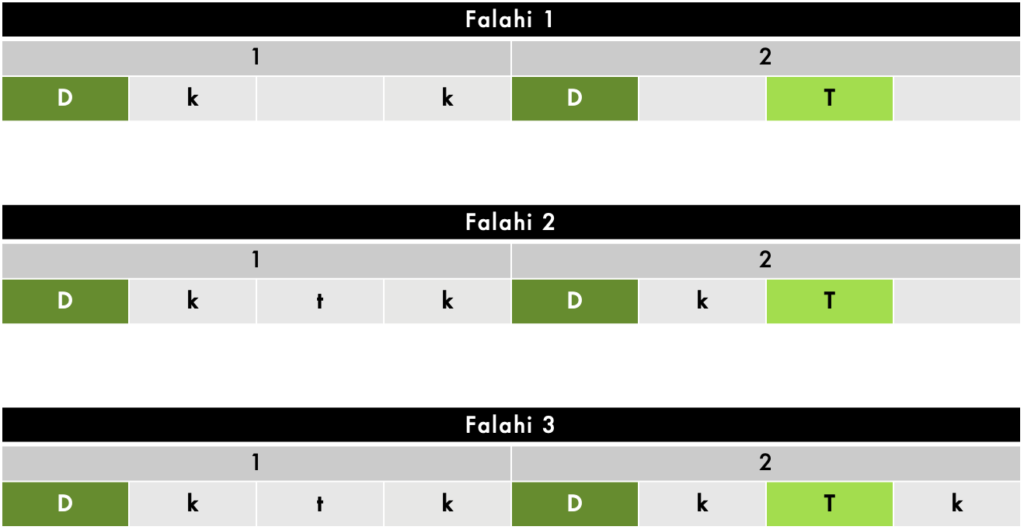
Key Facts:
The Maqsum is the king of all rhythms, and countless oriental songs are played to the Maqsum
Inspires lively stepping in Raqs Sharqi, used a lot in intros.
Fast pace, good entrance rhythm, and probably one of the most popular rhtmhs around.
At very fast tempo, it might be called Falahi
The first part of the Maqsum is DT, which is inversed in the second part (TD)
Maqsum means divided, because it’s split into two halves
In Turkish it’s known as Duyak
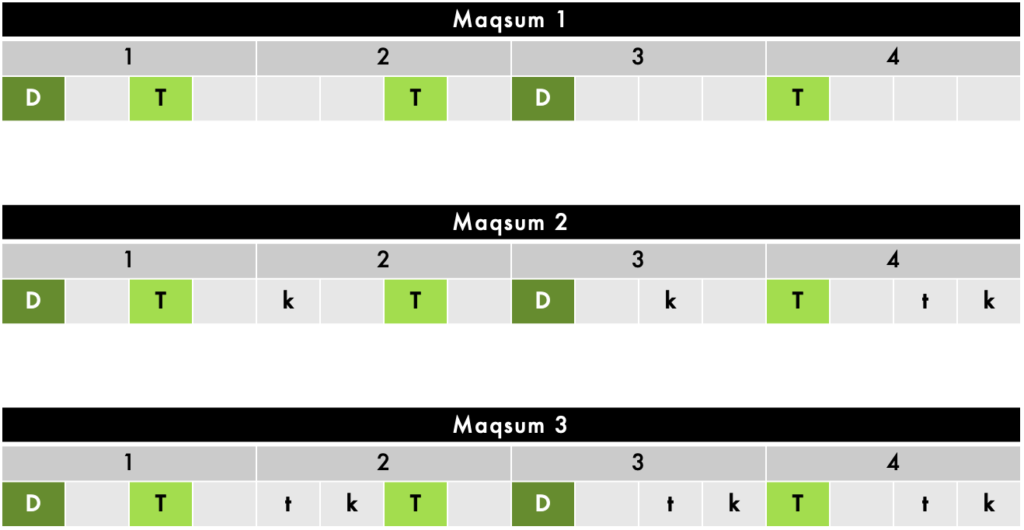
Key Facts
Egyptian
Also known as the Masmoudi Saghir
Baladi means ‘of the country’, and is comparable to English ‘folk’ musi
Baladi came about when farmers moved to the city and started dancing in small spaces
Baladi is a 4/4 rhythm
Earthy rhythm used for steps and hip drops in Raqs Sharqi
Non-English speakers traditionally call all rhythms in the Maqsum family Baladi
Baladi implies gypsy-ness, something not urban.
Modulates well with Maqsum as slightly heaver than Maqsum
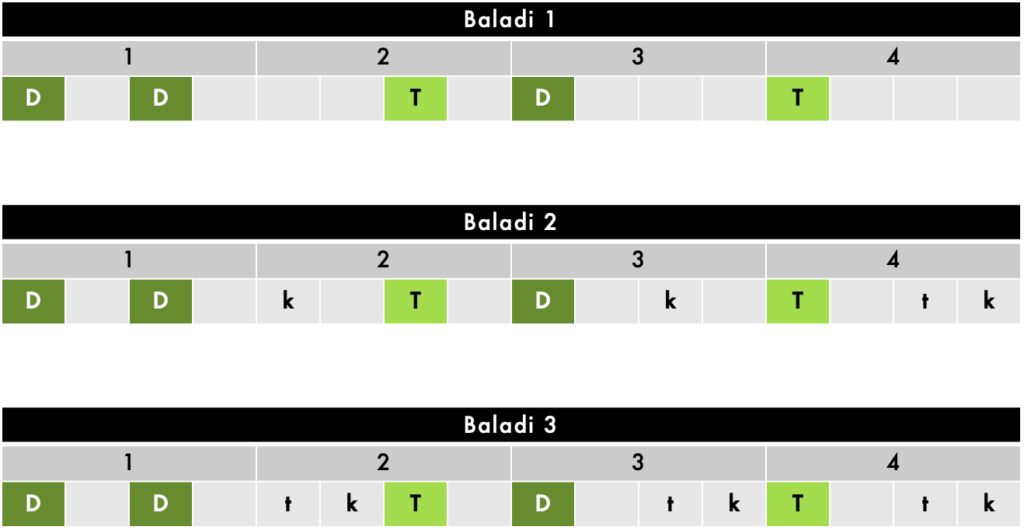
Key Facts
Sa’idi comes from the regional of Sa’id; the northern region of Egypt
When millions of people from Northern Egypt migrated to Cairo and nearby regions for work, the Sa’idi increased massively in popularity
Very popular in Sa’idi music genre
First Doum is regularly comitted
Doum Doum used for dances with forward-backward motion
Can be referred to Ghawazee as was popular amongst egptian Ghawazi
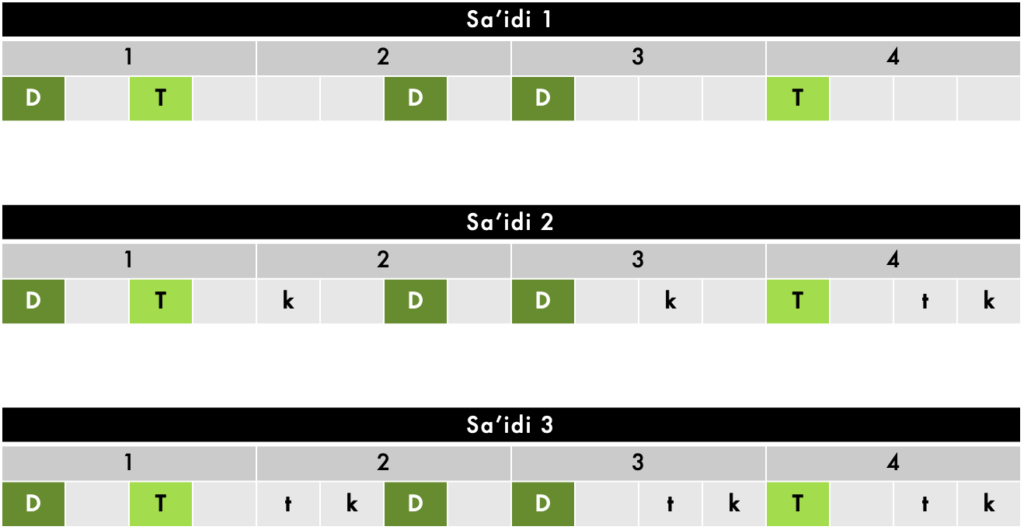
Key Facts
The Heavy Sa’idi is a derivative form of the Sa’idi
Can be referred to as Super Sa’idi
It is often played using a Bass Doholla in the background with a solo Darbuka playing over it
Heavy Sa’idi is a 4/4 rhythm
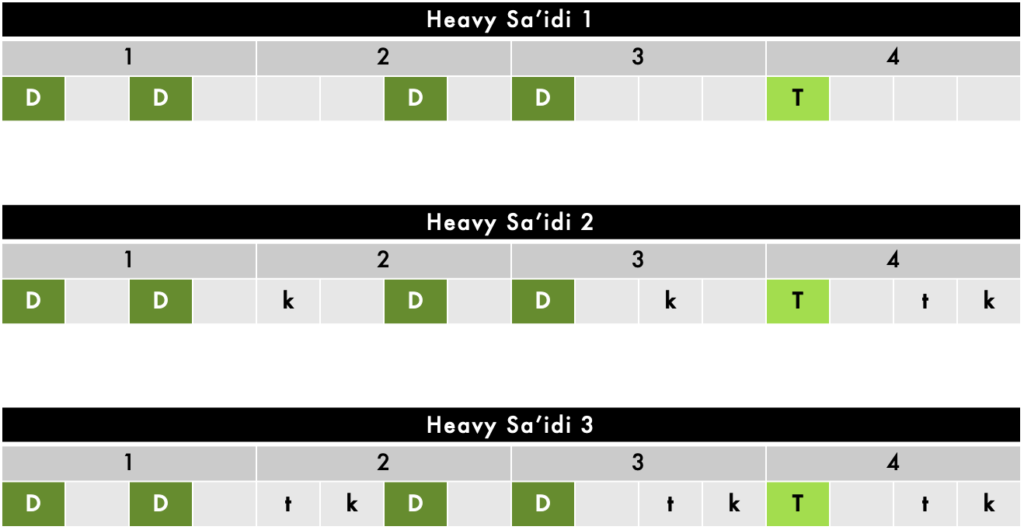
Key Facts:
Also known as Nawari
Lebanese rhythm
Used in line dances
Kata Kofta dances
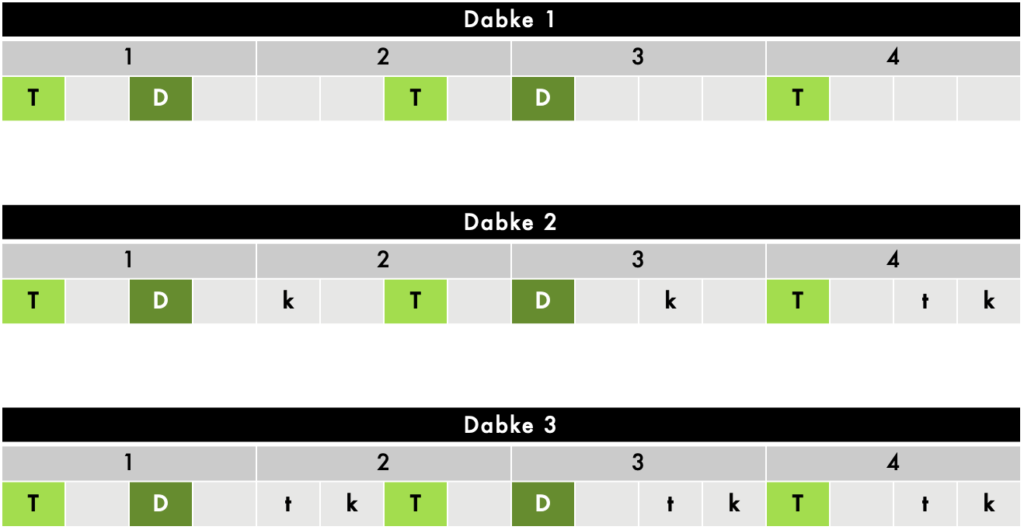
Key Facts:
Egyptian
Good for solos
Some say wahda instead of Wahdi
Means one
Wahdi has one, cifte telli has two Doums
Main iqa for Tarab
Lots of space to ornament
Although it shares characteristics with Malfuf, it has a different feel due to its accents and subtleties.
Modulates well with Maqsum
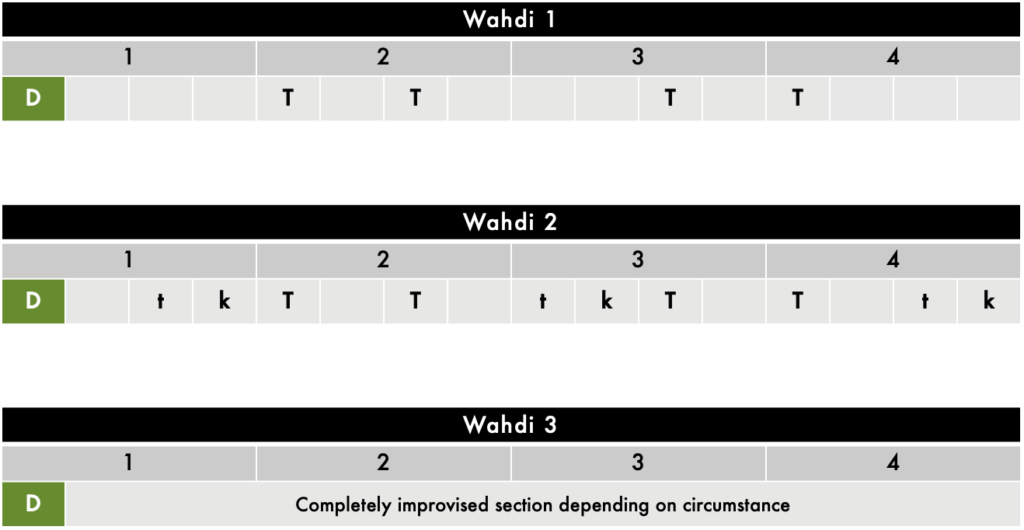
Key Facts:
Egyptian
Traditional beat for wedding procession march
Zaffa means wedding procession in which many drummers accompany the groom ro pick up the bride in a grand, loud procession.
Usually played by many people with as many different drums as possible
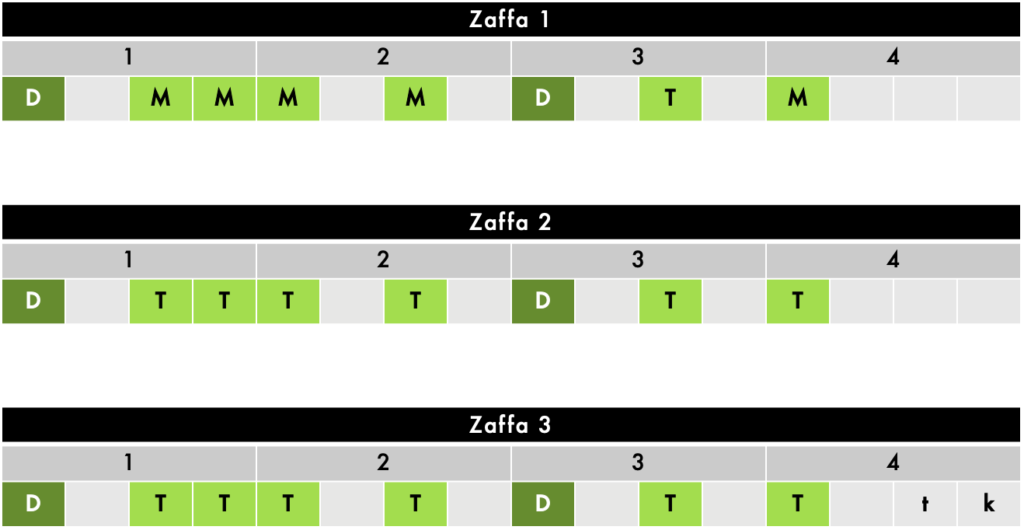
Key Facts:
Egyptian folk rhythm from the word bambi in the Egyptian dialect, meaning pink
Often led with the 7th beat, especially in Raqs Sharqi, to emphasise the DDD, either while maintain the current structure or by shifting the whole structure 2 beats back.
The DDD can be swapped out with a D-D or DTD.
Can be modulated with Cifte Telli if Cifte Telli is being played in it’s fast mode
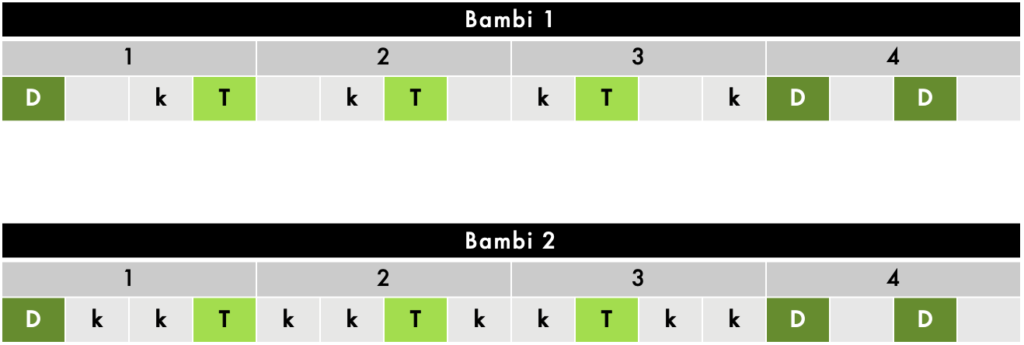
Key Facts:
Pronounced Shaftatelli in Arabic
Pronounced Tsiftetelli in Greek
Not used often in composition, used more in vocal and instrumental improvisations
Turkish and Greek
Fast (light), slow (heavy)
Is the Greek word for belly dance
Assimilated by greeks living in tkruey
Arabs called it Wahda Kabira, Iraqis call it Dar e Noss and Lebanese call it Wahad e Noss
Egyptians play Cifte Telli differently to turks
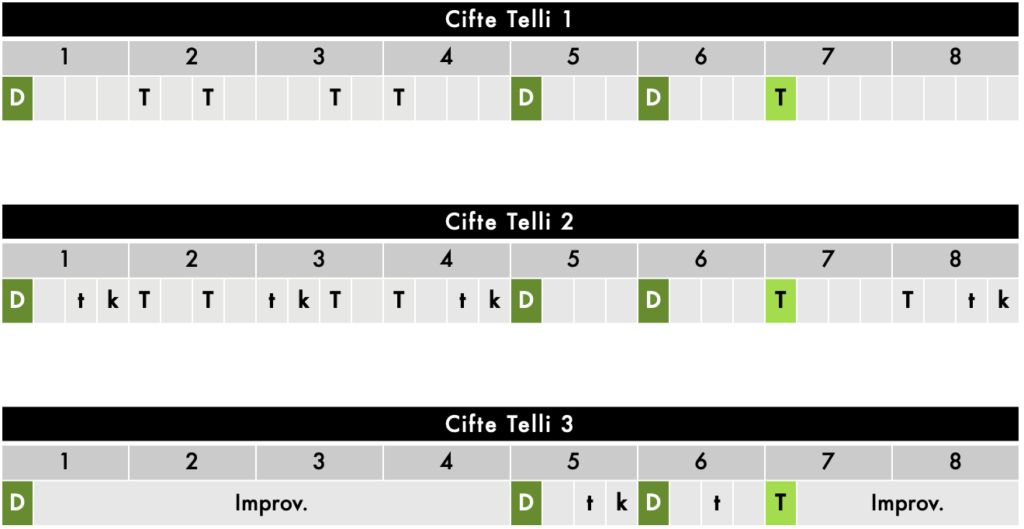
Key Facts:
Egyptian rhythm more common in Egypt than Turkey
Used as slow alternative to Cifte Telli, formal and classic feel.
Used in instrumental compositions where it alternates with Maqsum in an introduction
Popular in introductions and in Dawr vocal form
Many ways of playing rhythm, including 3 Doums at the beginning (third doum on third beat)
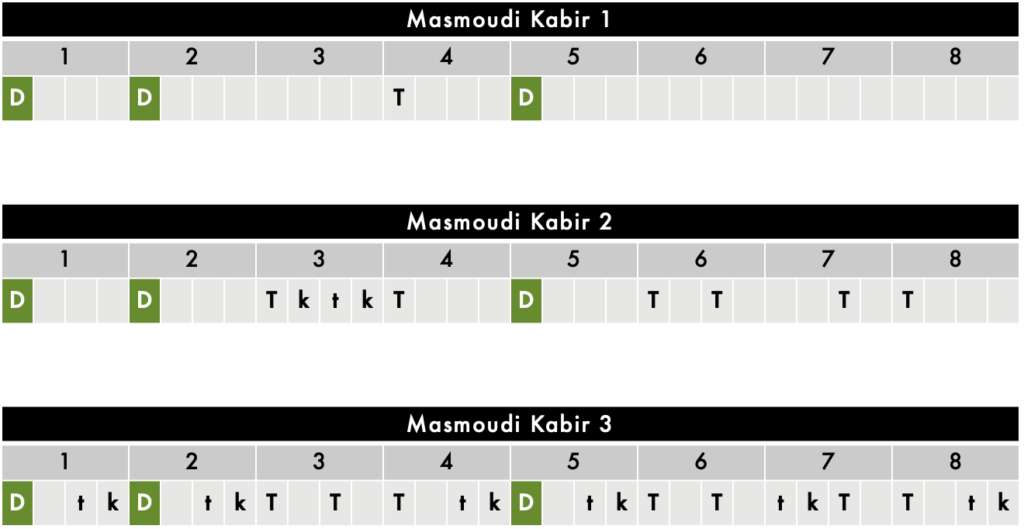
Key Facts:
Can be shortened to just Sama’i, “Thaqeel” means heavy
Can be called Aqasaq Sama’i
Has Turkish origins, and is a popular Muwashshah Iqa’
Often confused with the Cifte Telli because of the middle Doum-Doum, however it is quite a different rhyhm with a different feel
Quite an open rhythm with lot’s of long spaces for ornamentation
If used with a solo, we just play Doum on first and eight beat to allow singer/instrumentalist to solo
